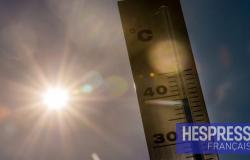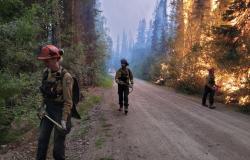– Advertisement –
As of February 28, 2025, Lebanon issued only 965 building permits according to consolidated data from the orders of engineers from Beirut and Tripoli, marking an annual drop of 39.23 %. This degradation is part of an always very unstable economic context, coupled with an uncertain security situation, two factors that strongly slow down real estate investments. At the same time, the total area authorized for construction (CAP – Construction Area Authorized by Permits) only fell 0.17 % over one year, reaching 973,547 m². This dissociation between the number of permits and the total surface testifies to a reduced number of projects, but of size similar to those of the previous year.
The geographic impact: Beirut and the Békaa in strong decline
All regions of the country have recorded notable drops, but some are particularly affected. Beirut recorded the highest drop, with a collapse of 85 % in the number of permits, totaling only 12 authorizations, compared to 80 a year earlier. Next come the Békaa (-57.52 %) and Nabatiyé (-52.26 %), while the other governorates suffer decreases between 23 %and 50 %.
| Governorate | Number of permits | Weight (%) | Annual evolution (%) |
|---|---|---|---|
| Beyrouth | 12 | 1,00 | -85,00 |
| Mont Lebanon | 409 | 34,17 | -23,12 |
| Lebanon-North | 13 | 1,09 | -50,00 |
| Frog | 96 | 8,02 | -57,52 |
| Lebanon-South | 257 | 21,47 | -43,02 |
| Nebati all the fine world | 116 | 9,69 | -52,26 |
| Total national | 965 | 100,00 | -39,23 |
The Mont Lebanon region remains the most dynamic with 409 permits issued, representing more than a third of the national total (34.17 %). However, this area also records a significant contraction of 23.12 % compared to the previous year.
An always tense security climate
The fall in the number of building permits is explained by several concomitant factors. In addition to the persistent recession and restrictions on banking funding, the deterioration of the security climate plays a central role. Despite a cease-fire agreement signed on November 27, 2024, Israeli strikes in certain Lebanese areas continued in 2025, nourishing instability. Between February and September 2024, the conflict extended from the south of the country to Beirut, causing the leak of investors and the freezing of many real estate projects.
This uncertainty continues to weigh heavily on the building sector, traditionally engine in the Lebanese economy. The withdrawal of capital and the refusal of engagement on the part of promoters and engineers find in these figures a tangible expression.
Sectoral trend: slowdown but not collapse of surfaces
An important element to underline: despite the sharp drop in the number of permits, the surface authorized for construction has varied little. The CAP drops only 0.17 %, from 975,182 m² in February 2024 to 973,547 m² in February 2025. This means that the projects submitted remain of large scale, suggesting that only the most solid and resilient promoters still manage to initiate or continue their operations.
Economic reading: the building sector at technical stop
The construction sector is one of the advanced indicators of the Lebanese economy. Due to its multiplier role, a drop in activity impacts directly related branches such as building materials, engineering, town planning and unskilled employment. The decrease of 39.23 % of the licensed permits therefore represents a structural alert. This figure is all the more worrying since it is not accompanied by a parallel recovery in other indicators of economic trust (mortgage, foreign direct investments, etc.).
CAP data and permits are also indicative of a regional imbalance: large historic agglomerations (Beirut, Tripoli, Tyr, Saïda) become areas with security risks, while more stable peripheral regions do not attract enough investments to compensate.
Institutions concerned: Beirut and Tripoli engineers’ orders
The data published in this article come from Orders of Beirut and Tripoli Engineersprofessional institutions representing Lebanese engineers. They supervise, validate and identify building permits in Lebanon. These orders play a key role in the regulation of the profession and in statistical monitoring of the sector. For example, the order of Beirut brings together more than 57,000 members in 2024, while that of Tripoli has approximately 18,000. Their database is authoritative in monitoring building activity in Lebanon.
– Advertisement –








